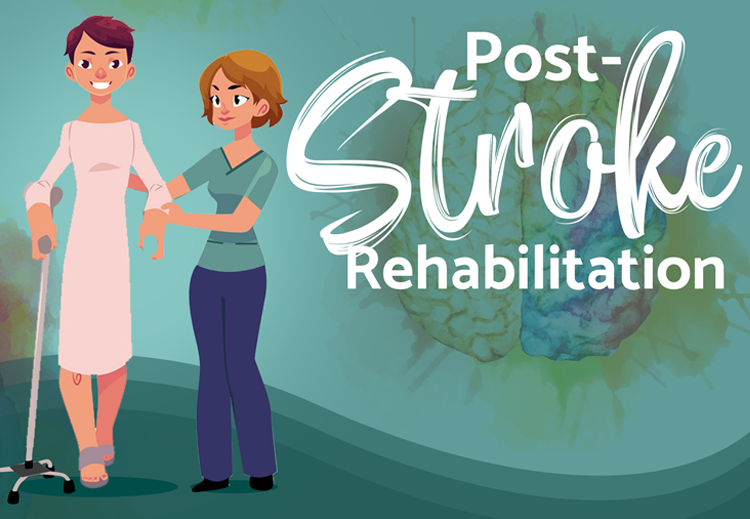What is Stroke?
Stroke is a medical emergency and should be immediately treated to reduce further brain damage and other complications. Stroke happens when brain cells die on the part of the brain that cannot receive blood or enough blood due to blocked or raptured blood vessels.
Depending on the span of time and the part of the brain affected, this may cause temporary or permanent disability.
Symptoms of Stroke
If you notice any symptom of stroke, immediately seek medical attention. The severity of brain damage due to stroke depends on how fast it was treated. The sooner it is treated, the lesser the potential for damage and disability.
- Facial drooping
- Sudden numbness or drooping in one side of the face
- Uneven or lopsided smile
- Arm weakness
- Sudden numbness in one arm
- When raising arms above your head at the same time, one arm may start to move downward.
- Speech difficulty
- Difficulty in speaking or inability to speak
- Slurred speech, making it hard to understand
- Sudden numbness
- Sudden numbness felt in one side of the body, usually on the face, arms or legs
- Sudden confusion
- Difficulty in understanding speech
- Sudden vision problems
- Blurred or blackened vision on one or both eyes
- Sudden walking problems
- Loss of balance and coordination
- Dizziness, loss of balance or loss of coordination when walking
- Sudden severe headache
- Severe headache with no known cause, which may trigger vomiting, dizziness, or altered consciousness
Post-stroke Rehabilitation
Some patients would need rehabilitation after a stroke because of the skills that were suddenly lost when a part of their brain was damaged. Disability caused by stroke may be temporary or permanent. Rehabilitation is a big part in relearning basic skills, becoming independent and improving the quality of life of a stroke survivor. Rehabilitation also prevents and protects patients from developing new medical problems.
Common Types of Therapy:
- Physical Therapy
- This rehabilitation therapy focuses on disabilities related to motor and sensory impairments. This therapy helps in restoring physical functioning by evaluating and treating problems with movement, balance, and coordination.
- This program may include exercises to strengthen muscles, improve coordination, regain range of motion, and relearn simple motor activities such as walking, sitting, standing, lying down, and the process of switching from one type of movement to another.
- Occupational Therapy
- This rehabilitation therapy focuses on enabling patients to perform their occupations – activities that matter to the patients and are expected from them at a given time.
- This program aims to:
- Promote independence in daily occupations such as dressing, bathing, grooming and toileting while keeping the patient safe
- Restore premorbid skills and functions to allow patients to return to their previous roles and routine
- Modify tools and equipment to cater present limitations.
- Create strategies to allow patients to cope with demands at home, school/work and community.
- Facilitate carry-over of techniques outside the hospital premises to continually improve on their current skills and function.
- Speech Therapy
- This therapy focuses on the assessment and treatment of communication problems and speech disorders.
- Speech therapy techniques are used to improve communication; these include articulation therapy, language intervention activities, and improve the ability to swallow.
How can our hospital assist your post-stroke rehabilitation needs?
The DLSUMC Medical Arts Center houses the clinics of physiatrists who can help you in managing your physical rehabilitation concerns. For their schedules, you may visit: http://findadoctor.dlshsi.edu.ph/ or you may call (046) 481-8000 or (02) 8988-3100 locals 1531 or 1532.
Also, our hospital has a Physical and Rehabilitation Medicine Unit that could cater your needs. You may click this link https://www.dlshsi.edu.ph/dlsumc/services-facilities/physical-medicine-rehab or you may call (046) 481-8000 or (02)8988-3100 local 1044 to know more about the services this unit offers.
References:
- American Stroke Association
- Mayo Clinic
- National Institute of Neurological Disorders and Stroke
———————————————————————————————————————————————————-
Disclaimer:
All content found on the DLSUMC website, including text, graphics, images, audio or other formats were created for general informational purposes only and are not intended or implied to be substitutes for professional medical advice, diagnosis or treatment.
If you think you may have a medical emergency, call your doctor, go to the emergency department, or call your local emergency hotline immediately.

